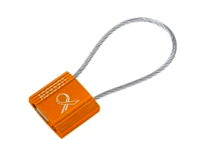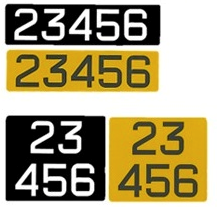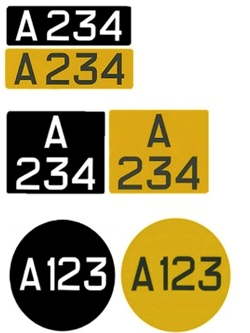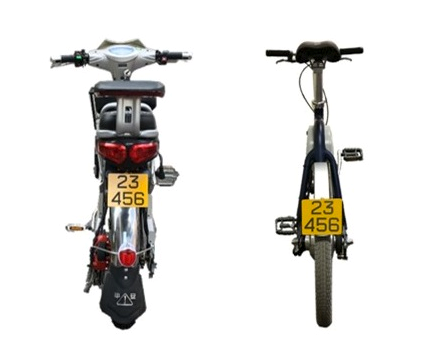To use your Power-Assisted Bicycle (PAB) in Singapore, you must ensure that it is type-approved, sealed and registered with a registration number plate.
At a Glance
Understanding Power-Assisted Bicycles (PAB) |
Before you purchase your PAB, please note that:
If you fail to follow the requirements when using your PAB, you may face penalties. |
Registering your PAB |
If you are buying a registered PAB from a retailer, the retailer will transfer the registration to your name. Check that the PAB meets the technical requirements before buying it from the retailer.
If you are self-importing an unregistered PAB, you will need to bring it for type-approval, sealing and registration at any LTA-Appointed Inspection Centre (AIC). Before purchasing the PAB, please consult the PAB manufacturer to ensure that the PAB meets the technical requirements and the required documents can be obtained (which includes the complete EN15194:2017 test report issued by an accredited test laboratory).
If your PAB has already been inspected at an AIC before August 2017 and had an orange seal affixed, please write in to www.lta.gov.sg/feedback concerning your registration. PABs with blue seals are no longer allowed to be registered from 1 February 2018 onwards.
You have to affix a registration number plate on your PAB once it is registered. |
| Transferring and deregistering your PAB | You may also transfer your PAB to another rider who meets the requirements.
If you are no longer using your PAB, you can also deregister it. |
Related digital services |
Understanding Power-Assisted Bicycles (PAB)
To keep Power-Assisted Bicycles (PABs) safe for riders and other road users, all PAB models must be approved by LTA.
You can only use a PAB on roads and shared paths, such as park connectors. PABs are not allowed on footpaths. Riders must wear protective gear when riding a PAB.
If you fail to follow the requirements when using your PAB, you may face penalties.
Technical Requirements
You must be at least 16 years old to use a PAB.
For your safety and the safety of other road users, your PAB must meet the following technical requirements:
- The construction of a PAB must be similar to that of a conventional bicycle
- The PAB can only be powered by an electric source
- The PAB must comply with European Standard, EN15194, for electric power-assisted cycles
- The maximum continuous power output of the PAB must not exceed 250 watts
- The motor power of the PAB can only cut in when the rider starts to pedal
- The motor power of the PAB must be progressively reduced and finally cut off as the bicycle reaches 25km/h, or sooner, if the cyclist stops pedalling
- The maximum weight of the PAB must not exceed 20kg
- Click here for the list of approved PAB models (PDF, 1.9 MB)
LTA will require all PABs that are sealed and registered from 1 July 2021 to comply with the EN15194:2017 standard. As such, EN15194:2009+A1:2011 compliant PABs cannot be sealed or registered from 1 July 2021.
EN15194:2009+A1:2011 compliant PABs previously sealed and registered before 1 July 2021 are not affected by this new requirement. Such PABs can still be used on roads and cycling paths and can have their registration transferred to new owners.

Registering your PAB
You must be at least 16 years old to register a PAB.
When you are buying a registered PAB from a physical store, online or second-hand, the retailer or seller will need to transfer the registration to your name. Check that the PAB meets the technical requirements before buying it from the retailer or seller.
If you are self-importing an unregistered PAB, you will need to bring it for type-approval, sealing and registration:
Step 1: Getting type-approval and a seal for your PAB
Bring along the following to any LTA-Appointed Inspection Centre (AIC):
- Your PAB (the PAB must meet all technical requirements)
- Completed application form (PAB01) (PDF, 161kB)
- Required documents listed under ‘Instructions & Notes’ in the application form. This includes the complete EN15194:2017 test report issued by a test laboratory that is accredited to perform full EN15194:2017 testing.
STA Vehicle Inspection (Sin Ming) 302 Sin Ming Road Singapore 575627 Tel: 6452 1398 |
STA Vehicle Inspection (Boon Lay) 249 Jalan Boon Lay Singapore 619523 Tel: 6261 6178 |
VICOM inspection Centre Pte Ltd (Sin Ming) 385 Sin Ming Drive Singapore 575718 Tel: 6458 4555 |
VICOM Inspection Centre Pte Ltd (Bukit Batok) 511 Bukit Batok Street 23 Singapore 659545 Tel: 6458 4555 |
VICOM Inspection Centre Pte Ltd (Kaki Bukit) 23 Kaki Bukit Avenue 4 Singapore 415933 Tel: 6458 4555 |

Upon approval, your PAB will be affixed with the above seal.
It is an offence to tamper with or remove the seal.
Before you can use your PAB on public roads or shared paths, you will need to first register it. Registration of PABs is also done at the AIC, and it can be done at the same time you get your PAB type-approved and sealed.
Only PABs with a valid orange seal can be registered.
If your PAB has already been inspected at an AIC before August 2017 and had an orange seal affixed, please write in to www.lta.gov.sg/feedback concerning your registration. PABs with blue seals are no longer allowed to be registered from 1 February 2018 onwards.
Step 3: Affixing a registration plate on your PAB
After you register your PAB, you must affix on it a plate bearing the registration number assigned by LTA within 3 calendar days.
You can get your registration number plate made at a vehicle or signcraft workshop. If you need help affixing your registration number plate, check directly with your retailer.
Your registration number plate should have the following specifications:
| 4 or less digits | 5 digits | Letters and digits |
|---|---|---|
 |
 |
|
| Only single row. | Single row, or 2 rows with the first 2 digits in the top row. | Single row, or 2 rows with letters only in the top row and digits in the bottom row. |
Your PAB number plate must also meet the following requirements:

- Either black characters against a yellow background, or white characters against a black background
- The space between a letter and a digit is 10mm
- The space between adjoining letters or between adjoining digits is 5mm
- Letters and digits are at least 5mm away from the top and bottom edge of the registration number plate
- Letters and digits are at least 10mm away from the sides of the PAB registration number plate
- For letters and digits displayed in 2 rows, the space of the letters and digits between the 2 rows is 10mm
- For rectangular registration number plates, they must be at least 75 mm long and 45mm high
The PAB number plate must be permanently affixed at a conspicuous location at the rear of the PAB, with characters facing the rear. Depending on the PAB’s design, the number plate can be affixed on:
- The PAB’s original number plate mounting provision
- The rear rack/mudguard
- Customised plate mounting brackets

The number plate must be affixed such that it will not pose a hazard to the rider and other users of the road or shared path.
Modifying your PAB
In the interest of safety, LTA prohibits modification and add-ons to PABs that would render the original testing and compliance to the EN15194 standard null and void. PAB users, including food delivery riders, are therefore urged to maintain their PAB in its stock condition as originally designed, tested, sealed and registered. A list of Frequently Asked Questions (FAQs) on PAB modifications is as follows.
Modifications of PABs that render them non-compliant are prohibited. Generally, modifications of the mechanical or electrical components of PABs will render them non-compliant unless the modifications were catered for during the testing and certification of the PAB. A non-exhaustive list of such components that generally cannot be modified include:
- The batteries
- Electrical cables/connections and wirings
- The electric traction motor and motor controller
- Handlebars, frame, suspension
- Saddle and seat post
In addition, the installation of additional lighting, electrical/electronic accessories, etc. that draw power from the PAB’s electrical system are disallowed. The installation of throttle or throttle-like features that enable the PAB to be operated without pedalling is also prohibited.
As part of LTA’s requirements, from 1 July 2021, only EN15194:2017 compliant PABs can be type-approved and sealed. The EN15194 standard is a comprehensive one that ensures the critical components can comply with safety requirements. Generally, modifications of the mechanical or electrical components of a PAB would void the EN15194 testing and certification, unless the modifications were catered for during the testing and certification of the PAB.
Modifications and add-ons made after the PABs are tested to the EN15194 standard will void the certification, unless these modifications and add-ons have been catered for in the initial testing phase. Retailers can work with PAB manufacturers to identify possible add-ons that their customers might want, and include them as part of the EN15194 testing and certification process.
Transferring ownership of your PAB
If you are transferring your PAB ownership, you must initiate the transfer process online within 7 calendar days of physically transferring the PAB to the next owner. The next owner has 5 calendar days to confirm the transfer or it will lapse and you will remain the registered owner.
Once the next owner confirms the transfer, he/she will have to pay the transfer fee of $11 (non-refundable).
Before you can start the transfer of your PAB, ensure that:
- The next owner is at least 16 years old
- Your PAB is registered with a valid seal. If your PAB does not have a seal, please get your PAB type-approved and registered
Steps to transfer ownership of your PAB
Initiate a transfer request online.
The current owner will need:
- Singpass to log in
- PAB registration number
- Next owner’s particulars (e.g. name, identification number, email address and contact number, if next owner is an individual)
Once the current owner has initiated the transfer request successfully, the next owner will be notified via email to confirm the transfer request online within 5 calendar days. Otherwise the transfer request will lapse.
The next owner will need:
- Current owner’s particulars (e.g. name, identification number and email address)
- PAB Registration Number provided by current owner
- Singpass to log in
- Date of Birth
- Email address (can be updated in dashboard)
- Contact number (can be updated in dashboard)
- Scanned copy of identification documents (NRIC/FIN)
- Valid credit/debit card (VISA or MasterCard only), Internet Banking Account with DBS/POSB, OCBC/Plus!, Standard Chartered Bank or UOB (eNETS Debit) with adequate balance for deduction of the $11 for each PAB transferred, or SGQR PayNow
Deregistering your PAB
If you no longer wish to use your registered PAB, you may deregister it. There is no fee for deregistering a PAB.
Once you have deregistered your PAB, please ensure it is not kept or used on any roads, cycling paths or shared paths.
